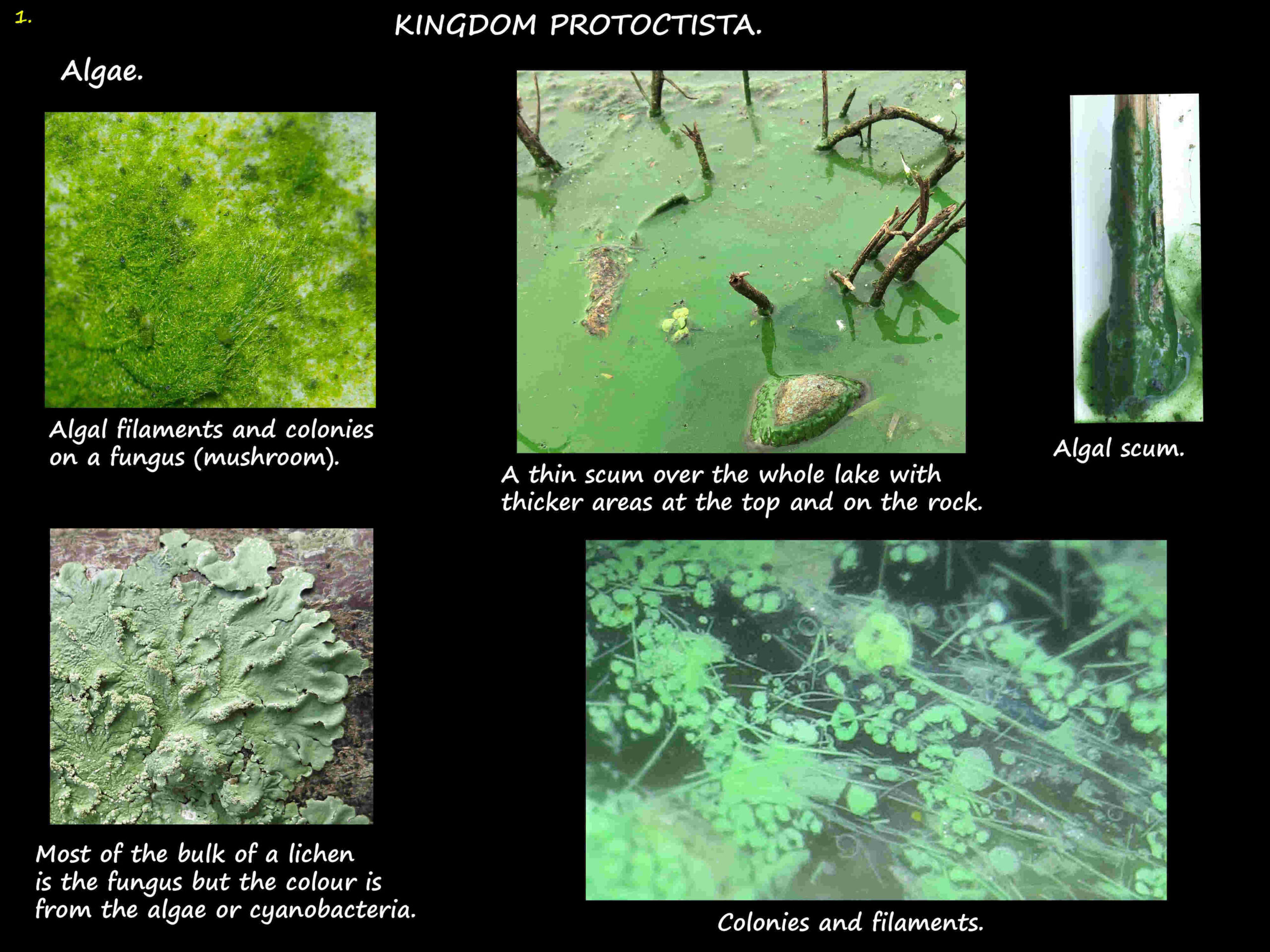Kingdom Protoctista – Algae & Slime moulds.
Algae.
Algae (alga single) is a non-specific term used to cover several unrelated groups of simple organisms, with up to 30,000 species.
They are eukaryotes having their genetic material in a nucleus which is surrounded by a membrane.
They have no true leaves or roots but obtain their energy from photosynthesis which differentiates them from the protozoa and bacteria.
(The exception are the Cyanobacteria that are true bacteria, but able to photosynthesise.)
Algae developed from Cyanobacteria which are Prokaryotes.
In the past Cyanobacteria were mistaken for algae.
In some aquatic systems they act like algae, are often called blue-green algae and grouped with the algae.
Algae range in size from microscopic Diatoms up to giant kelps and many are marine.
They have a range of pigments giving rise to the names such as green, red and brown algae.
Green algae are the ancestors of green plants.
Algae can take many forms:
- single, non-motile cells,
- small groups or colonies of motile or non-motile cells,
- filamentous – a string of non-motile cells that sometimes branches,
- some show partial tissue differentiation such as the kelps (brown algae).
Algae may form symbiotic relationships, for example lichens are an association between a
fungus (usually an Ascomycete) and an alga or sometimes a Cyanobacterium.
Algal blooms.
Both algae and cyanobacteria can cause blooms in still water that has a high concentration of nitrogen
and phosphorus that leads to massive proliferation of the organisms.
Blooms are typically blue-green but can also yellow, red, or brown.
Some just cause discolouration of, and alter the taste of, the water.
Some produce a scum on the water while others form a thick mat.
The lower oxygen content of the water, or the release toxins can be harmful to other organisms.
Algae reproduce by budding (asexual) or the production of spores (sexual).
J.F.


